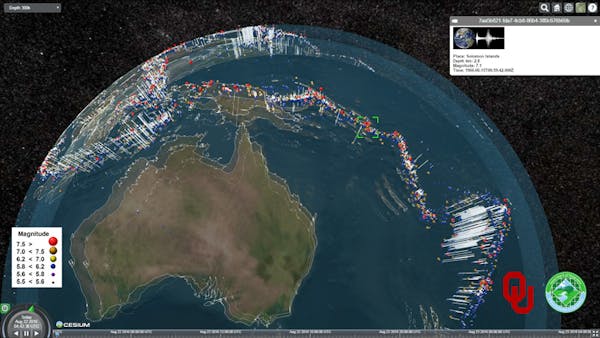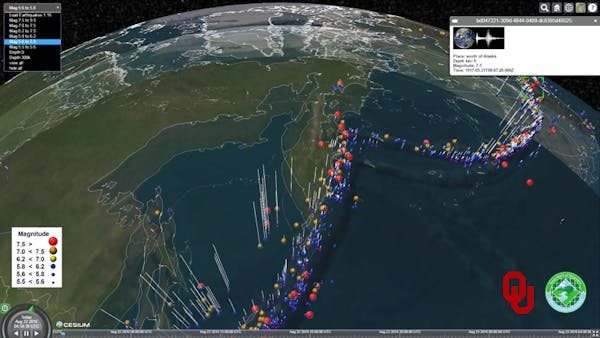Global Subsurface Visualization of Earthquakes Using Depth-Layered Cueing
Researchers Reuben Reyes and Jadwiga Ziolkowska of the University of Oklahoma are using Cesium for geospatial and geotemperal visualization. The initial work started using KML and KMZ files in Google Earth and NASA World Wind. Once support matured and became available in Cesium for KML/KMZ files, a port was completed and put on the web using Cesium. This made a live demo available to anyone with a web browser. Global Subsurface Earthquakes represents earthquakes in a timespan of 100 years (April 1914 to April 2014) with magnitudes of 5.5 to 8.0 or greater. The total number of earthquakes in this visualization is over 24,000 entries, while this large dataset visualization is facilitated by WebGL used in Cesium. The benefit of Cesium is that it allows for smooth viewing and interacting with large data sets.



A key part of the visualization is the global subsurface representation of earthquakes. To create a clearer display of the subsurface representation, two different methods were used for depth-layered cueing: 1) vector outlines of earth countries at different depths that act as a wire frame, and 2) translucent Earth layers, also represented at different depth. This research and visualization resulted in a paper: Ziolkowska, J.R.; Reyes, R. (2016): Geological and Hydrological Visualization Models for Digital Earth Representation. Computers & Geosciences 94: 31–39.